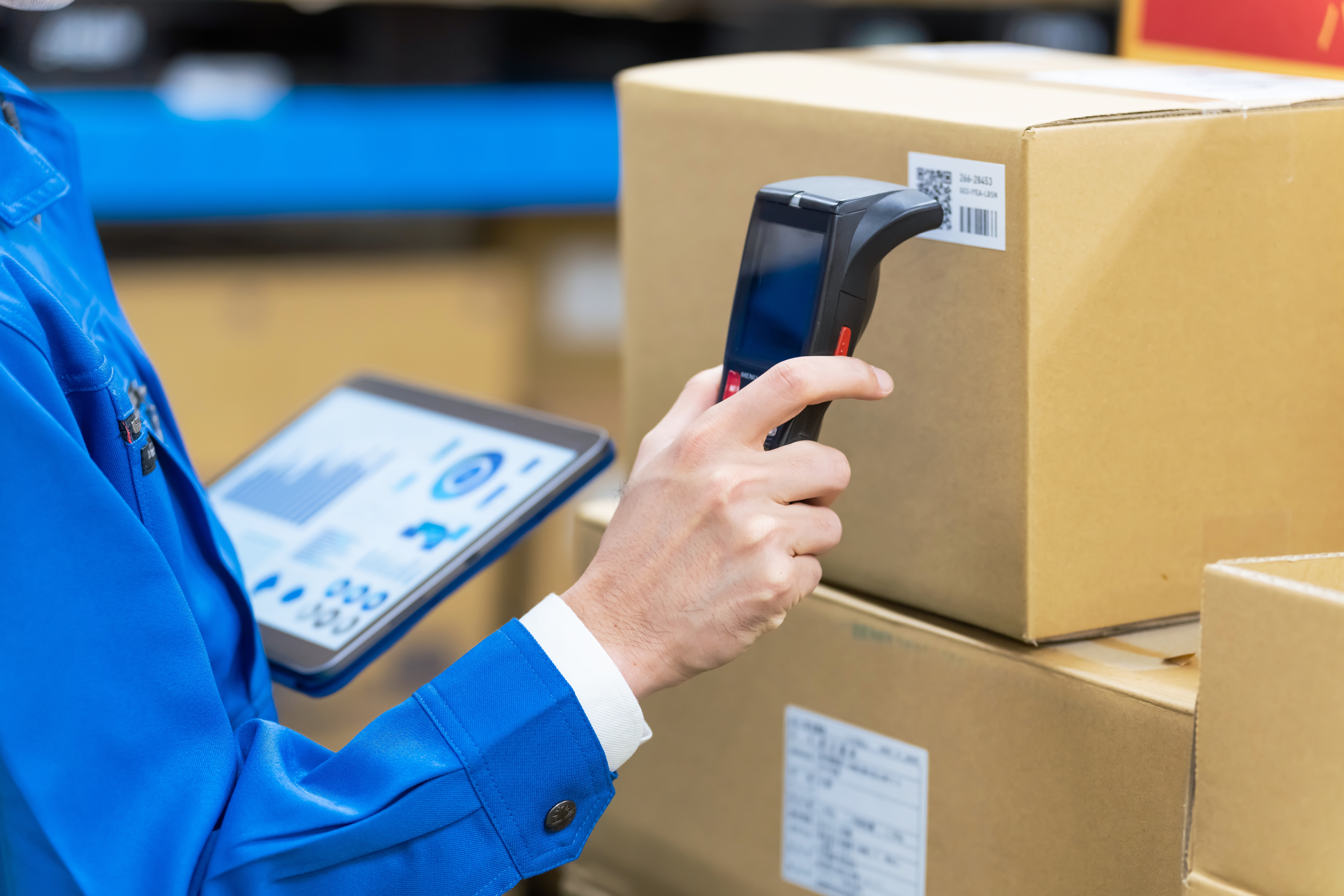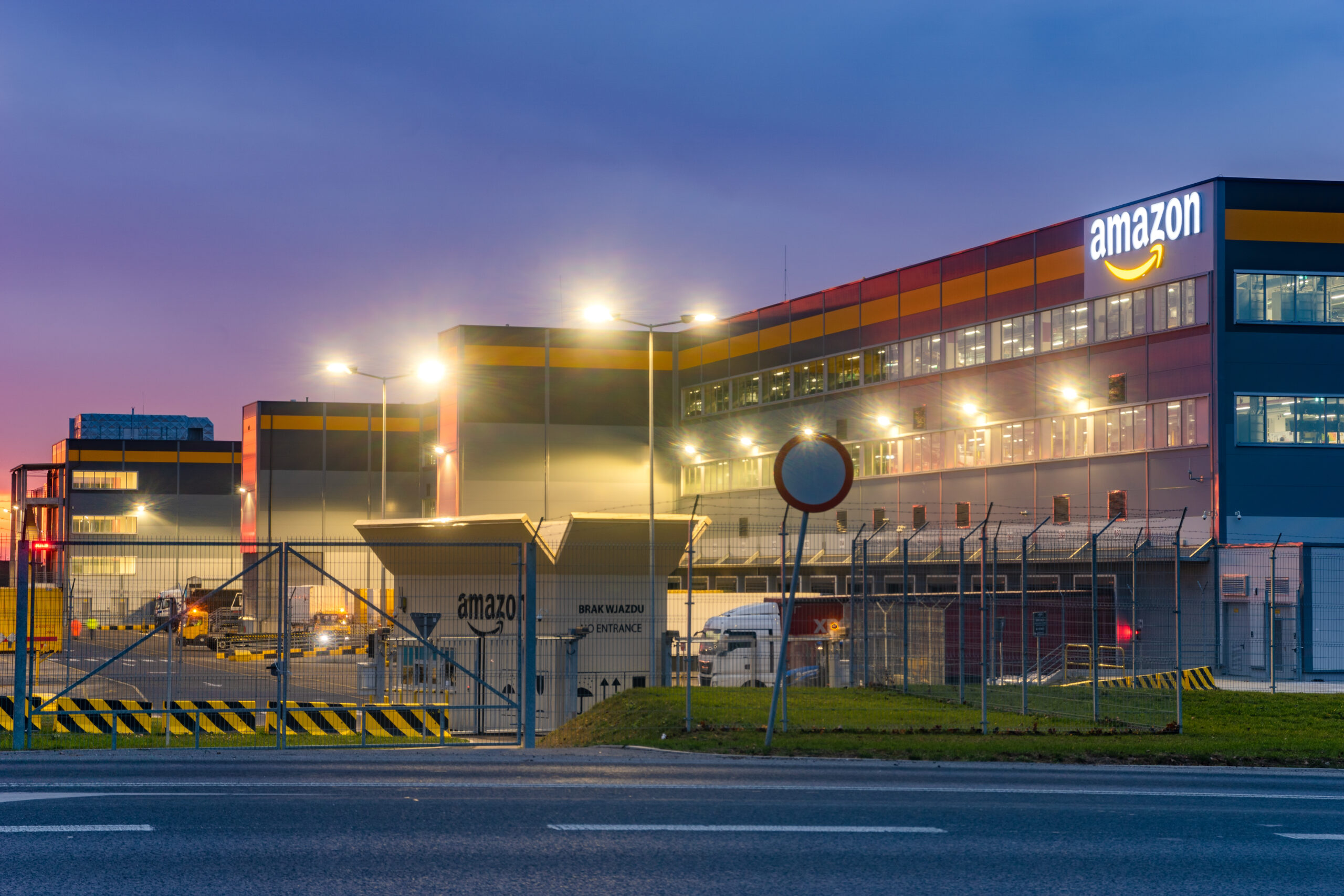Hidden Profit Killers on Amazon: How to Maximize Your Profitability
September 15, 2025

Are You Losing Profits on Amazon Without Realizing It?
Running a successful Amazon business isn’t just about making sales—it’s about keeping those sales profitable. Many sellers unknowingly lose thousands of dollars each year due to hidden costs and inefficiencies.
Are you struggling with high ad spend, excessive storage fees, or rising return rates? These issues chip away at your bottom line, making it difficult to scale your business. The good news? Most of these profit killers are preventable.
We’ll uncover the 8 of the biggest hidden profit killers on Amazon—and, more importantly, how to fix them. By identifying and addressing these costly mistakes, you can increase your margins, reduce unnecessary fees, and improve overall profitability.
Key topics include:
- Ad spend: Inefficient ad spend and how to optimize campaigns
- Inventory: inventory management mistakes that lead to high fees
- FBA Fees: Storage and placement fees that impact your bottom line
- Package Size: Bulky packaging and excessive fulfillment fees
- Loss Prevention: Lost & damaged inventory without reimbursement strategies
- Returns: High return rates and negative reviews that reduce conversion rates
- Software: Overuse of third-party tools leading to unnecessary expenses
- Price Erosion: MAP violations and unauthorized sellers affecting price integrity
By the end of this article, you’ll have a clear understanding of how to identify and address these profit killers to maximize your success on Amazon.
1. Inefficient Ad Spend
Many brands assume that more ad spend equals more sales, but without proper campaign optimization, it often results in wasted money and low returns. Amazon’s advertising system is sophisticated, and if sellers don’t closely monitor their campaigns, they can end up spending too much on ineffective placements, poor targeting, and unoptimized keywords. The result? High ad costs with minimal profitability.
How to Optimize Amazon Ad Spend:
- Regularly audit campaigns to identify underperforming ads and shift budget to high-performing ones.
- Utilize negative keywords to prevent irrelevant clicks that don’t lead to conversions.
- Test different bid strategies (manual vs. automatic) to find the most cost-effective approach.
- Analyze placement reports to determine whether top-of-search, product pages, or rest-of-search ads perform best.
- Optimize product listings to ensure ads lead to high-converting pages—great ads won’t help if the product page doesn’t convert.
- Use Amazon DSP (Demand-Side Platform) for retargeting, which can help bring back potential customers who didn’t convert initially.
- A/B test ad creatives to determine the best-performing visuals and copy for Sponsored Brands and Sponsored Display ads.
Many sellers make the mistake of setting and forgetting their ads, assuming that once a campaign is running, it will continue performing well. Instead, sellers should constantly analyze and refine their strategy to ensure that every dollar spent is bringing in profitable returns.
2. Inventory Fulfillment Mistakes
Many sellers struggle with keeping the right balance of inventory, either overstocking and paying high storage fees or understocking and losing sales due to stockouts. Amazon’s fulfillment system is structured in a way that punishes poor inventory planning, meaning brands must be strategic about how they manage their stock.
Common Inventory Pitfalls:
- Overstocking leads to long-term storage fees, especially for slow-moving products.
- Understocking causes stockouts, leading to lost sales and lower ranking in Amazon’s algorithm. Additionally, low inventory fees are additional charges Amazon may apply when stock levels are critically low.
- Inefficient inbound shipments can drive up costs, especially when failing to follow Amazon’s placement recommendations.
- Not leveraging multi-channel fulfillment options, which can reduce reliance on FBA alone.
Best Practices for Inventory Management:
- Use demand forecasting tools to predict stock levels based on historical sales and seasonality.
- Monitor sell-through rates to identify slow-moving inventory and adjust restock frequency.
- Implement just-in-time inventory strategies to balance stock levels and minimize long-term storage fees.
- Set automated restocking alerts to ensure timely replenishments and avoid stockouts.
- Diversify fulfillment options by using both FBA and FBM (Fulfilled by Merchant) to mitigate risk.
- Review Amazon’s IPI (Inventory Performance Index) score regularly and take action to improve it, such as removing excess inventory or increasing sales velocity.
Many brands overlook how critical inventory management is to their profitability. By staying proactive and implementing a data-driven approach to inventory, sellers can avoid costly mistakes and maintain a steady cash flow.
3. Storage & Inventory Placement Fees
Many sellers assume that shipping inventory to Amazon is a simple process, but poor placement decisions can lead to unnecessary fees and higher costs. Amazon’s fulfillment center distribution model has shifted over time, and failing to optimize inventory shipments can drastically impact your bottom line.
Understanding Amazon’s Placement Fee Options:
Amazon offers three different inventory placement models, each with varying costs and benefits:
- Single Location Option: This allows you to send inventory to one fulfillment center, but it comes with a very high placement fee. While shipping may be cheaper, the upfront cost can quickly eat into profits.
- Hybrid Option: This requires sending inventory to 2-4 different locations, reducing placement fees while still allowing for some control over shipping costs.
- Optimized Placement: This option eliminates placement fees, but your inventory could be spread across 5+ locations, potentially increasing shipping costs significantly.
How to Reduce Storage & Placement Fees:
- Evaluate shipment costs on a per-case basis to determine the most cost-effective option.
- Follow Amazon’s placement recommendations strategically—ignoring them could result in higher fees.
- Use Amazon’s Restock Inventory Report to align shipments with demand, minimizing unnecessary distribution expenses.
- Consider negotiating better freight rates when shipping inventory to multiple fulfillment centers.
- Monitor storage limits and aged inventory reports to avoid long-term storage fees.
- Optimize shipment sizes and pallet configurations to reduce per-unit shipping costs and increase efficiency.
Sellers often overlook how these fees quietly drain profitability over time. By taking a more strategic approach to inventory placement and shipment logistics, brands can significantly cut down on unnecessary expenses and keep margins healthy.
4. Bulky Packaging & FBA Fees
Many sellers don’t realize that packaging dimensions and weight significantly impact Amazon’s Fulfillment by Amazon (FBA) fees. The larger and heavier your product, the more you’ll pay in fulfillment costs. Even minor increases in package size can push a product into a higher fee tier, cutting into profits.
How Bulky Packaging Increases Costs:
- Dimensional Weight Pricing: Amazon calculates fulfillment fees based on the greater of actual weight or dimensional weight (length x width x height ÷ 139). Oversized packaging can result in disproportionately high fees.
- Increased Storage Fees: Larger products take up more warehouse space, leading to higher monthly storage fees—especially during peak seasons when rates surge.
- Higher Returns Due to Inconvenience: Bulky or excessive packaging can increase return rates if customers find products difficult to handle, store, or ship back.
Ways to Reduce Packaging & Fulfillment Costs:
- Optimize packaging dimensions to fit within a lower FBA fee tier while maintaining product protection.
- Use poly bags or vacuum-sealed packaging where possible to reduce size and weight.
- Regularly audit Amazon’s fee structure to ensure your products aren’t unnecessarily categorized in a higher pricing tier.
- Work with packaging engineers to find cost-effective alternatives that don’t compromise durability.
- Test different packaging configurations to identify the most space-efficient design that minimizes costs.
Small adjustments in packaging can lead to significant cost savings over time. By carefully evaluating your packaging strategy, you can lower FBA fees, reduce storage costs, and improve overall profitability without sacrificing customer experience.
5. Lost & Damaged Inventory: The Need for Reimbursement Plans
Many sellers assume that Amazon automatically reimburses them for lost or damaged inventory, but this isn’t always the case. While Amazon does have policies in place to handle these issues, errors frequently occur, and sellers who don’t actively track their inventory losses could be leaving thousands of dollars on the table.
How Inventory Gets Lost or Damaged:
- Inbound Shipping Issues: Products can be lost or damaged while being transported to fulfillment centers.
- Warehouse Handling Mistakes: Inventory can be misplaced, mislabeled, or damaged during Amazon’s processing.
- Customer Returns & Refund Errors: Amazon sometimes fails to restock returned products properly, resulting in loss discrepancies.
- Unclaimed FBA Reimbursements: Amazon doesn’t always catch every lost or damaged unit, requiring sellers to file claims manually.
How to Recover Lost or Damaged Inventory Costs:
- Regularly audit your FBA reports to identify discrepancies in received inventory.
- Monitor Amazon’s reimbursement reports and cross-check with your actual inventory levels.
- Manually file reimbursement claims when discrepancies are found—Amazon only processes claims within a limited timeframe.
- Use third-party reimbursement tools to automate claims and track missing inventory.
- Implement proactive tracking systems to monitor inventory from inbound shipment to final sale.
By staying vigilant and proactively reviewing lost and damaged inventory reports, sellers can ensure they recover funds that would otherwise be lost. Every dollar recouped goes straight back into your bottom line, improving overall profitability.
6. High Return Rates & Negative Reviews
High return rates and negative reviews don’t just impact customer satisfaction—they directly affect profitability. Frequent returns increase costs, reduce sell-through rates, and can even lead to listing suppression if Amazon detects a high defect rate. Negative reviews further hurt conversions and can push potential customers toward competitors.
Common Causes of High Return Rates:
- Misleading product descriptions or poor images: If a product doesn’t match customer expectations, returns are inevitable.
- Defective or low-quality products: Even minor quality issues can lead to high return rates and negative feedback.
- Inaccurate sizing/dimensions: Returns spike when products don’t match the listed specifications.
- Complicated assembly or unclear usage instructions: If a product is difficult to use, customers may return it out of frustration.
- Poor packaging leading to in-transit damage: Damaged products result in automatic refunds and replacement costs.
How to Reduce Returns & Negative Reviews:
- Ensure product listings are 100% accurate—descriptions, specifications, and images should clearly reflect what the customer will receive.
- Use high-quality images and videos to provide a detailed look at the product and set realistic expectations.
- Improve product quality control by implementing stricter manufacturing standards and conducting regular inspections.
- Enhance customer education by including detailed user guides or tutorial videos to minimize confusion.
- Offer responsive customer service to resolve issues before customers resort to leaving a bad review or returning the product.
- Analyze return reasons regularly to identify patterns and proactively fix recurring issues.
A high return rate is often a symptom of a larger issue, whether it’s misleading marketing, quality problems, or unclear product expectations. By addressing these root causes, sellers can protect their profits, improve customer satisfaction, and strengthen their brand reputation.
7. Overuse of Third-Party Tools
Many sellers turn to third-party tools to help manage various aspects of their Amazon business, from advertising and keyword tracking to inventory management and analytics. While these tools can be beneficial, using too many or redundant tools can create unnecessary expenses and operational inefficiencies.
How Overuse of Tools Hurts Profitability:
- Subscription Costs Add Up: Many tools operate on a monthly subscription basis, and overlapping functionalities can lead to paying for services that aren’t needed.
- Complexity Slows Down Operations: Too many tools can lead to a lack of clarity, making decision-making more complicated instead of more efficient.
- Data Overload: Relying on multiple tools can result in conflicting data points, making it harder to take decisive action.
- Automation Overreach: Some automation tools can make poor optimizations, such as mismanaging ad bids or causing unnecessary inventory restocking.
How to Optimize Third-Party Tool Usage:
- Audit all software subscriptions to identify tools with overlapping functions and eliminate redundancies.
- Prioritize tools that provide clear ROI—if a tool isn’t actively contributing to revenue growth or efficiency, consider canceling it.
- Leverage multi-functional platforms that consolidate features
- Regularly reassess your tool stack as your business scales—what worked when you were starting may not be necessary as your operation grows.
- Test free trials before committing to paid plans to ensure the tool delivers actual value.
Many sellers assume that more tools equal better performance, but in reality, strategic selection of a few high-impact tools is far more effective than juggling a dozen unnecessary subscriptions. Reducing tool clutter will save money and create a more streamlined, efficient workflow.
8. MAP Violations & Unauthorized Sellers
One of the biggest threats to brand profitability on Amazon is losing control over pricing due to Minimum Advertised Price (MAP) violations and unauthorized sellers. When resellers undercut your pricing, it not only reduces margins but can also damage brand perception and create distrust with authorized retailers.
How MAP Violations & Unauthorized Sellers Hurt Profitability:
- Price Erosion: When unauthorized sellers list your product below MAP, it forces others to lower their prices, leading to a race to the bottom.
- Loss of Buy Box Control: If a lower-priced unauthorized seller wins the Buy Box, it can significantly reduce sales for the brand itself.
- Brand Reputation Damage: Customers who purchase from unauthorized sellers may receive counterfeit or low-quality versions of your product, leading to bad reviews.
- Strained Relationships with Retail Partners: If authorized resellers see their prices being undercut, they may stop carrying your products altogether.
How to Protect Your Brand’s Pricing Integrity:
- Enforce MAP policies with authorized resellers and have clear contractual agreements in place.
- Regularly monitor for MAP violations using Amazon Brand Registry and third-party tracking tools.
- Identify and remove unauthorized sellers by working with Amazon’s Brand Registry to file infringement claims.
- Use IP protection measures like trademarks and gating programs to restrict unauthorized sellers from listing your products.
- Educate customers about the risks of buying from unauthorized sellers and guide them toward trusted sources.
Many brands overlook the impact of MAP violations and unauthorized sellers until their margins have been drastically reduced. Taking a proactive approach to brand protection ensures pricing consistency, safeguards your reputation, and keeps your Amazon business profitable.
Conclusion & Key Takeaways
Managing an Amazon business is complex, and profit killers can eat away at your bottom line if left unchecked. By identifying and mitigating these inefficiencies, sellers can significantly increase profitability and improve operational efficiency.
Key Takeaways:
✔ Optimize ad spend to reduce wasted marketing dollars.
✔ Manage inventory efficiently to avoid high storage fees and stockouts.
✔ Manage inventory efficiently to avoid high storage fees and stockouts.
✔ Leverage Amazon’s placement options to find the most cost-effective shipping strategy.
✔ Reduce return rates by improving product listings and quality control.
✔ Monitor FBA lost and damaged inventory to recover reimbursements.
✔ Optimize product packaging to lower fulfillment costs.
✔ Limit third-party tool expenses to streamline operations.
✔ Enforce MAP policies to protect pricing integrity.
By proactively addressing these areas, you can maximize profitability, strengthen your brand, and ensure sustained growth in the highly competitive Amazon marketplace.
View More Insights
Ready to scale your business?
Talk with one of our ecommerce experts.



